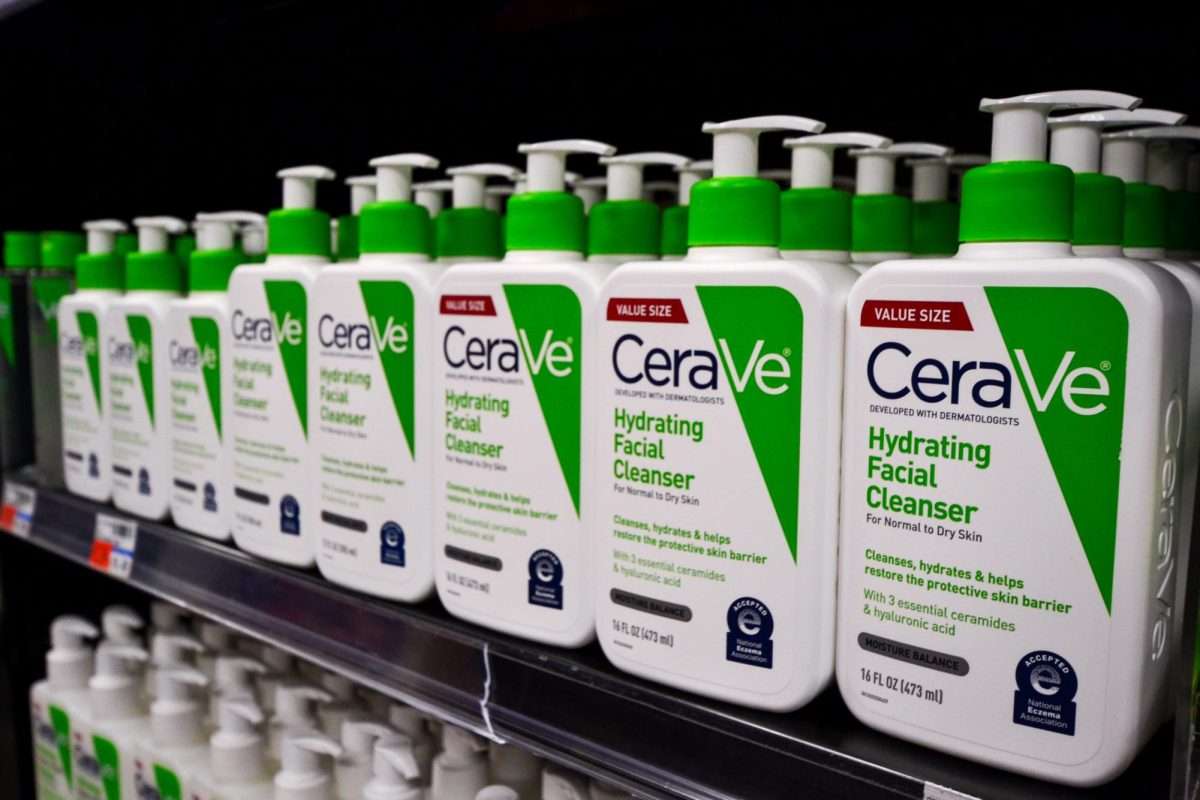A skincare product company will fund a residency position for the GW Department of Dermatology starting next summer.
CeraVe will support a new, three-year dermatology resident beginning next July with funding they provided to the department, increasing the department’s number of available residency positions next application cycle from two to three. Professor Adam Friedman, the residency program director and the chair of dermatology, said creating an additional dermatology residency program will help reduce the shortage of dermatologists nationwide and could increase diversity in the dermatology workforce.
Dermatology is one of the most competitive specialties in medicine, with 651 total applicants vying for just 423 postgraduate year-two residency spots in 2017 nationally, according to a 2018 study. Just under two-thirds of active dermatology residents between 2019 and 2020 reported their race or ethnicity to be white, compared to the 56.2 percent of physicians in all specialties identifying as white, according to a 2022 study.
“Creating an additional position addresses both issues by increasing the workforce even by one dermatologist and also provides an additional opportunity to match for all those seeking such a competitive position,” Friedman said in an email.
Dermatology residents are paid and gain hands-on experience with patients while learning in traditional educational settings like lectures and seminars. Friedman said the position is open to candidates who have completed their first year of postgraduate work.
He said the new residency position will be “no different” than other dermatology residency positions within the School of Medicine and Health Sciences, where residents receive training and opportunities like presenting at conferences and engaging in community service. He said CeraVe will fund the program but will not be involved in selecting or training the resident.
Friedman didn’t specify the amount of funding CeraVe will provide but said the costs would be similar to those of other three-year residencies.
He said discussions between dermatology department faculty and CeraVe leadership about how CeraVe could support the dermatology community and address “gaps” in the specialty began in 2020. Friedman said there has been a “long” and “recognized” shortage of dermatologists, citing a 2017 study that found that the number of dermatologists in the nation must double to address the total skin disease burden.
“There is clearly a need for more dermatologists on many levels,” Friedman said. “One of the rate limiting steps is funding, which is substantial and not easily available.”
Friedman said dermatology department faculty composed and submitted a proposal for the residency position support to CeraVe, and CeraVe approved their proposal and signed an agreement with the department after the initial discussions in 2020 to finalize the partnership. He said the American College of Graduate Medical Education — the organization that oversees residency accreditation in the U.S. — also approved the additional residency position last month, completing the “lengthy process” to fund the new position.
CeraVe partnered with the Howard University Dermatology Department last year to fund faculty training and infrastructure needed to perform clinical trials, according to a November release.
Experts in dermatology said the field is one of the most competitive specialties and that the program increasing the number of residency positions can help address the shortage of dermatology residencies and dermatologists.
Marc J. Kahn, the dean of the Kirk Kerkorian School of Medicine at the University of Nevada, Las Vegas, said the federal government funds most residency positions and caps the number of residencies. He said medical school enrollment has been increasing while residency offerings are not, creating a shortage of dermatology residencies.
He said the partnership between CeraVe and GW Dermatology is “helpful” in growing the number of residency positions because it is unlikely that the government will decide to fund more residencies. He said he would support similar partnerships at other institutions for all specialties to address the shortage of residency positions.
“If we’re going to increase the number of trainees in all specialties, we need to find creative ways to find residency positions,” Kahn said. “It sounds like what George Washington is doing is one way to do that.”
John Durkin, an assistant professor of dermatology and residency program director at the University of New Mexico, said more competitive residency programs have not historically created an environment to mentor underrepresented minorities.
“Dermatology is classically one of the most competitive residencies to get into, it’s up there with plastic surgery and orthopedic surgery,” Durkin said. “And interestingly, these most competitive residencies also tend to be the least diverse residencies and specialties.”
Durkin said officials should be “mindful” and holistically review applications when selecting for residency positions.
“I would hope there’s some sort of mission attached to this residency spot that helps to address those inadequacies and gaps in access to care for patients,” Durkin said.
Robert T. Brodell, a professor and the past founding chair of the Department of Dermatology at the University Of Mississippi, said he is “highly confident” the partnership will benefit dermatology patients in part because GW is looking for people to help expand access to dermatological services.
Brodell said the national shortage of dermatologists mainly affects access to dermatology care in rural areas. Brodell said he supports training residents in rural areas to bolster access because those who are trained in rural areas tend to practice in rural areas.
“I’m actually quite excited about the idea that they have a program and they’re looking for people who are going to solve access to care problems,” Brodell said. “And they’re going to select very carefully specific people that they believe will honor a commitment to do that.”





